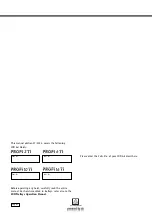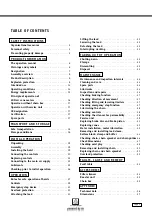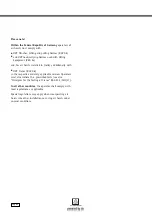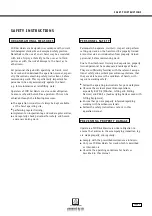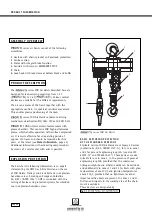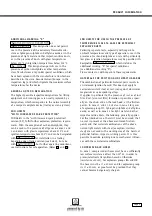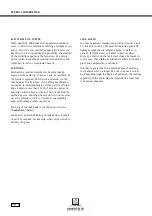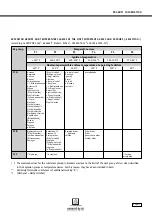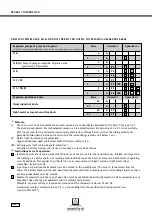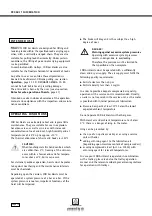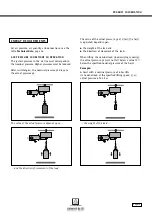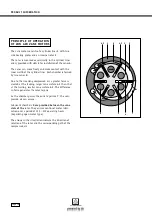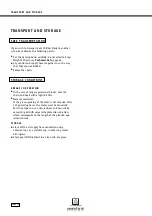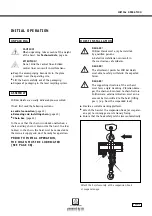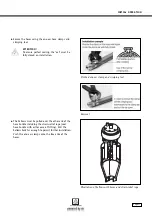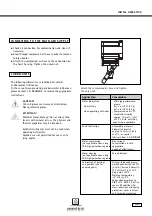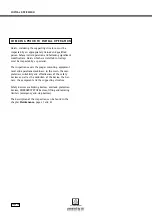
P RO D U C T I N F O R M AT I O N
Page 11
( ): The measured values for the substances placed in brackets are close to the limit of the next group of class when classified
in the explosion groups or temperature classes. For this reason, they have been included in both.
**:
Extremely flammable substances (cf. additional marking "X")
*1
(Methanol = Methyl alcohol)
Ex group
Temperature class
T1
T2
T3
T4
T5
T6
Ignition temperature
> 450°C
450-300°C
300-200°C
200-135°C
135-100°C
100-85°C
Maximum permissible surface temperature of operating facilities
450°C
300°C
200°C
135°C
100°C
85°C
II A
Acetone
(Ethyl alcohol)
n-Amyl alcohol
Acetaldehyde
Ammonia
(Ethylene glycol)
Benzene
Aniline
i-Amyl acetate
(petrol)
Benzol
n-Butane
Diesel
Chlorobenzene
n-Butyl alcohol
Fuel oil
1,2-Dichlorobenzene 1-Butylene
n-Hexane
Acetic acid
1,2-Dichloroethane
jet fuels
Ethane
Di-i-Propyl ether
Ethyl acetate
Natural gas
(Ethyl bromide)
Acetic anhydride
Ethyl chloride
n-Propyl acetate
(Carbon monoxide)
(n-Propyl alcohol)
o-Cresol
i-Propyl alcohol
Methane
Vinyl chloride
Methyl acetate
Methyl alcohol*1
Methyl bromide
Methyl chloride
Methylene chloride
Naphthaline
(Nitrobenzene)
Phenol
Propane
Toluene
o-Xylene
II B
Hydrocyanic acid
Butadiene-1,3
Dimethylether
Ethyl ether
(Ethyl bromide)
Dioxane-1,4
**Hydrogen
Ether
(carbon monoxide)
Divinyl ether
sulfide
Anaesthetic ether
(Nitrobenzene)
(Ethyl alcohol)
Diethyl ether
Town gas
Ethylene
(Ethylene glycol)
**Ethylene oxide
Isoprene
(n-Propyl alcohol)
II C
**Hydrogen
**Acetylene
**Carbon
disulphide
EXPLOSION GROUPS AND TEMPERATURE CLASSES OF THE MOST IMPORTANT GASSES AND VAPOURS (-SELECTION-)
(according to DIN VDE 0165
5
, Redeker
6
, Nabert, Schön
7
, IEC 60079-12
3
and IEC 60079-20
4
)


